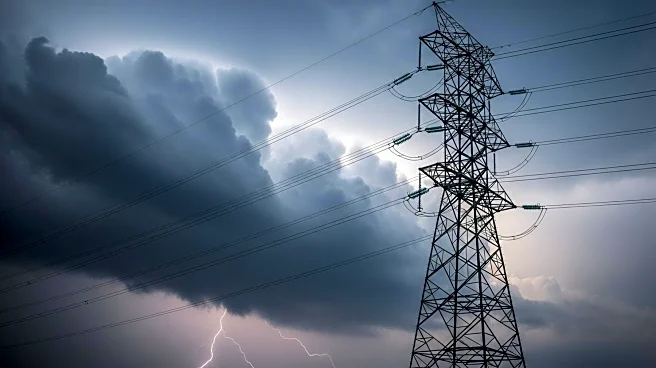What's Happening?
Investor-owned utilities in the U.S. are projected to spend over $1.1 trillion between 2025 and 2029 on grid upgrades and expansions, according to the Edison Electric Institute (EEI). This year alone, the sector is expected to invest nearly $208 billion, marking the highest annual expenditure ever. The increase in capital expenditures is driven by rising demand from AI data centers, industrial expansion, and electrification. U.S. electricity generation rose by 3% in 2024, with expectations of continued growth. The sector's investments have outpaced other capital-intensive industries, such as transportation and retail. However, the surge in spending has led to higher residential electricity rates, with significant increases in states like Maine, the District of Columbia, and New Jersey.
Why It's Important?
The substantial investment by investor-owned utilities is crucial for meeting the growing electricity demand in the U.S., driven by technological advancements and industrial growth. These investments are essential for maintaining reliable and secure electricity supply, which is vital for innovation and economic leadership. However, the increased spending has resulted in higher electricity rates for consumers, raising concerns about affordability. State regulators are urged to ensure that utility investments prioritize public interest and involve consumer advocates in rate proceedings. The focus on grid expansion highlights the need for balancing infrastructure development with consumer protection.
What's Next?
As utilities continue to invest heavily in grid infrastructure, state regulators and consumer advocates will likely play a critical role in overseeing these expenditures to ensure they align with public interest. The ongoing expansion may lead to further increases in electricity rates, prompting discussions on regulatory measures to protect consumers. Additionally, the focus on meeting demand from data centers and electrification may drive further technological innovations and policy developments in the energy sector.











